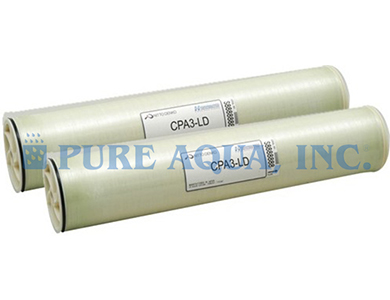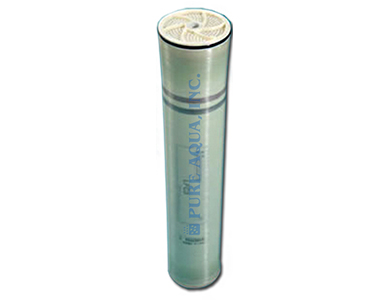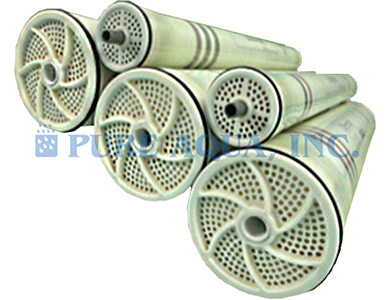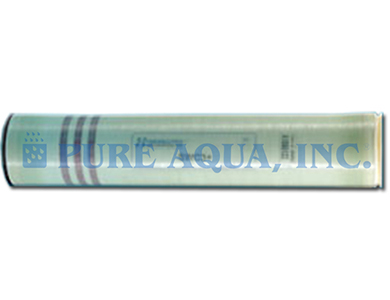ESNA1-LF2-LD are designed to provide high rejection of natural organic materials and moderate rejection of total hardness, while running below 100 psi, offering energy and cost savings. They provide 50%-90% salt rejection with ultra-low-pressure operations, increased energy savings, and significantly lower installation and operating costs. ESNA1-LF2-LD are high performance nanofiltration membranes ideal for softening applications and the removal of pesticides, bacteria or viruses.
ESNA1-LF2-LD Specidications:
- Permeate Flow: 10,500gpd (39.7m3/d)
- CaCl2 Rejection: 86%
- CaCl2 Rejection (minimum/maximum): 83%/94%
*Expected calcium rejection for a typical 500 ppm well water is 93% at 13gfd operating flux and 25°C.
- Type Configuration: Low Fouling Spiral Wound
- Membrane Polymer: Composite Polyamide
- Membrane Active Area: 400ft2 (37.1m2)
- Feed Spacer: 34 mil (0.864 mm) with biostatic agent
The stated performance is initial (data taken after 30 minutes of operation), based on the following conditions:
- 500 ppm CaCl2
- 75 psi (0.52 MPa) Applied Pressure
- 77°F (25°C) Operating Temperature
- 15% Permeate Recovery
- 6.5 – 7.0 Feed pH
Standard Operating Limits:
- Maximum Applied Pressure: 600 psig (4.16 MPa)
- Maximum Chlorine Concentration: < 0.1 PPM
- Maximum Operating Temperature: 113°F (45°C)
- pH Range, Continuous (Cleaning): 2-10 (1-12)*
- Maximum Feedwater Turbidity: 1.0 NTU
- Maximum Feedwater SDI (15 mins): 4.0
- Maximum Feed Flow: 75 GPM (17.0 m3/h)
- Minimum Ratio of Concentrate to Permeate Flow for any Element: 5:1
- Maximum Pressure Drop for Each Element: 10 psi
*The limitations shown here are for general use. For specific projects, operating at more conservative values may ensure the best performance and longest life of the membrane. See Hydranautics Technical Bulletins for more detail on operation limits, cleaning pH, and cleaning temperatures
[/custom-features]- Municipal Water Treatment
-
You have the quantity in stock
Very competitive price
 ENGLISH
ENGLISH ESPAÑOL
ESPAÑOL العربية
العربية PORTUGUÉS
PORTUGUÉS FRANÇAIS
FRANÇAIS














